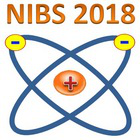Speaker
Dr
Olli Tarvainen
(STFC Rutherford Appleton Laboratory)
Description
A Penning-type surface-plasma ion source source has provided H$^{-}$ beam for the ISIS spallation neutron and muon facility at the Rutherford Appleton Laboratory (RAL) for nearly 35 years. The source delivers 55 mA of H$^{-}$ beam current with a beam duty factor of 1.5 $\%$ at 50 Hz repetition rate and a transverse 4-rms emittance $<1.0$ $\pi \cdot $mm$\cdot$mrad. Only 25 mA of H$^-$ current is actually required for ISIS operations, so poor beam transport efficiencies in the front-end are tolerated but are inefficient in terms of ion source performance overhead. The ion source is fundamentally lifetime-limited by material erosion, redistribution and flaking, through sputtering processes. Sputtering is mostly attributed to the use of cesium: mandatory for sustaining the discharge and for H$^{-}$ surface production. The limited lifetime affects the facility operational programme, necessitating a scheduled ion source replacement every 2-3 weeks in the middle of user cycles, plus very occasional unscheduled changes. It also requires significant technician effort to maintain a fleet of ten spare operational ion sources.
An RF-driven volume-production H$^-$ ion source project was approved and its funding secured in April 2018. It is proposed that the ion source will be coupled to the spare ISIS RFQ and a new medium energy beam transport (MEBT) line to form a completely new front-end. The front-end will have much improved transport efficiency and phase space matching into the ISIS linac, reducing the ion source output requirements to around 30 mA: within the realms of cesium-free operation. The front-end will undergo long-term performance benchmarking off-line, before installation on ISIS in the 2020s. In this paper we present the overview and current status of the RF ion source project. The conceptual design of an adjustable permanent-magnet filter field is introduced, together with preliminary simulations of the H$^{-}$ ion beam extraction and co-extracted electron dump. Technical solutions for the ignition element, guaranteeing reliable breakdown of the main discharge at 50 Hz repetition rate at the optimum gas pressure for H$^{-}$ production, are pursued with LPSC Grenoble and are also described.
Primary author
Dr
Olli Tarvainen
(STFC Rutherford Appleton Laboratory)
Co-authors
Dr
Dan Faircloth
(STFC Rutherford Appleton Laboratory)
Mr
John Macgregor
(STFC Rutherford Appleton Laboratory)
Mr
Julien Angot
(LPSC, Grenoble)
Mr
Mark Whitehead
(STFC Rutherford Appleton Laboratory)
Mr
Robert Abel
(STFC Rutherford Appleton Laboratory)
Dr
Scott Lawrie
(STFC Rutherford Appleton Laboratory)
Dr
Taneli Kalvas
(University of Jyväskylä)
Dr
Thomas Thuillier
(LPSC, Grenoble)
Mr
Tiago Sarmento
(STFC Rutherford Appleton Laboratory)
Mr
Trevor Wood
(STFC Rutherford Appleton Laboratory)

